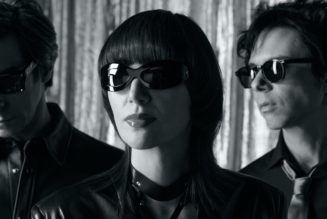For the midseason return of Roadkill’s Junkyard Gold, Steve Magnante is at Stephens Performance, an all-Mopar junkyard in Anderson, Alabama, looking over 3,000+ cars spread across 58 acres. What’s he looking for? The most popular car Dodge ever built, the Charger!
When the Dodge Charger arrived in 1966, it helped transform Dodge’s image as a maker of boring, practical cars to a leader in performance and the muscle car segment. The Charger nameplate carries so much weight, Chrysler brought it back in 2006 to help boost sales—a move that helped keep the brand alive through the 2008 financial crisis. Today, the modern Dodge Charger is one of the most popular muscle cars in the world and vintage models, with the right options, are some of the most expensive cars on the planet.
1966 Dodge Charger


The first-generation Charger (1966 and 1967) was based on the Coronet and was the show piece of Dodge’s B-body lineup. This came at a premium of $3,112, $418 more than the Coronet. The disappointing sales of the first-gen fastback body didn’t do justice to the amazing interior and engine packages of the 1966 and 1967 Chargers. This was a bit of surprise to Dodge, considering the popularity of Plymouth Barracuda—Chrysler’s first fastback-bodied car.
Related: The History of the Dodge Charger
The metal-faced gauges of first-gen Chargers had exclusive electroluminescent lighting. The seating arrangement was not two, but four standard bucket seats (for 1966 only) with a full length console. The door panels were vacuum formed ABS plastic with brushed aluminum inserts. This was a full-on show car right from the factory. Cool touches didn’t stop there, the trunk had a flat load floor with fold down rear seats that allowed for a good amount of configurability and cargo capacity in a muscle car. The headlamps also had a neat trick, the one-piece diecast units rotated on electric motors to hide them when not in use. And we can’t forget the full-width taillight with “CHARGER” emblazoned across it, letting everyone know exactly what you were driving.
Under the hood, the smallest engine available was the 318ci V8 with a 2-barrel carburetor, there were no slant-sixes here. From there, it was all big-blocks—the 361 with a 2-barrel, the legendary 383 with a 4-barrel, and the incomparable 426 Street Hemi. Selling only 37,300 units in 1966 and 15,788 in 1967 proved just how little the buying public understood what they had with the fastback Charger. If Steve Magnante had the ’66 he found at Stephens Performance, he would ditch the 383 under the hood in favor of a 1,000hp Hellephant crate engine from Mopar Performance, back it up with a Torqueflite 8-speed transmission, steal the independent rear suspension from a modern Charger, and put 17-inch Demon alloy wheels wrapped in Nitto drag radials on all four corners. That would show everyone what this 1966 Charger could and should have been.
1969 Dodge Charger R/T


The second generation of Charger (1968 through 1970) brought two things—one good, one bad—the Coke-bottle styling made famous by the likes of Dukes of Hazzard and Bullitt, and the cheapening of the Charger lineup. Less content meant a lower price, though, prices dropped $114 from 1967 to 1968. Those price reductions came in multiple ways, but mostly it was replacing metal parts with plastic.
First to go were those trick, rotating headlamp assemblies. Instead of the all-metal grille, Dodge used a plastic grille with vacuum powered headlamp covers (1968 and 1969 cars, 1970 cars had electric motors) to achieve the full-width grille look. Next were the futuristic electroluminescent gauges with metal faces, being replaced with a plastic facia and regular light bulbs. The front seats were still standard buckets, but the center console was now optional. Finally, those show car aluminum and plastic door panels were vinyl-covered cardboard. But it wasn’t all bad. One cool feature on the second-gen Charger garnered more praise and attention than all the features on the first-gen cars combined: the pop-top gas cap. A simple, spring loaded and hinged lid with a hole stamped in the quarter panel coupled with that famous coke bottle styling and flying buttress rear glass were enough to propel sales of the 1969 Charger to 85,680 cars.
Of the nearly 86,000 models sold in 1969, 19,298 were R/Ts, like the one Steve found here. The tail stripe and badging were the first clues, but those are easy to fake. The real test of whether any second-gen Charger is an R/T lies in the VIN. Standard Chargers started with XP29, while R/T equipped cars were XS29. The Charger R/T had only two engine options, the 440 and 426 Street Hemi, meaning these cars was all about performance. An L in the fifth digit of the VIN indicated a 440, where a J meant 426. Upping the performance cred were upgraded front brakes, one-piece cast 11×3-inch “cop brake” drums versus the standard multi-piece 10×2-inch stamped drums. Thicker, 0.92-inch torsion bars (up from 0.88 inches) to help tame the weight of those 400+ cubic-inch big-blocks in the turns, and out back the asymmetrical leaf springs helped to provide even traction between the wheels when all that power tried to twist up the driveline. The right leaf spring was a five-leaf pack with two half leaves that acted like a traction bar, and the left side was a heavy-duty six leaf pack. Between the springs were either the 8-3/4 rear end with optional Suregrip on 440 cars (Chrysler’s name for limited slip) or the famous Dana 60 with its huge 9-3/4-inch ring gear and standard Suregrip on Street Hemis.
If Steve put his hands on this ’69 R/T, he would replace the missing 440 and 727 Torqueflite (matching numbers be damned), stuff some 3.55 gears in the 8-3/4 and use some W21 5-spoke Magnum wheels on all four corners. Many builders would go for the 10-hole Rallye wheels, but those weren’t available until 1970 and would be inappropriate on this car.
1972 Dodge Charger Rallye


The third generation of the Charger (1971 to 1974) came with another restyling and yet more content reductions. The headlamp covers that were a signature trait of the Dodge Charger up to this point were now optional, as well the previously standard front bucket seats. While the fuselage styling of the third-gen Charger was more mundane than the gorgeous Coke bottle of the second-gen, it still handily outsold the first-gen, moving 75,594 into American garages in 1972.
This particular ’72 is one of only 4,531 Rallye models, the performance package that replaced the R/T and Super Bee packages that lasted until 1971. Rallye edition Chargers are easy to spot. Most noticeable is the domed hood, blacked out trunk and louvered taillights. The five character dimples at the end of the front fenders also have hashmarks in them. All but the 318 Rallye Chargers had stylized dual exhaust tips as well, the 318 was a single exhaust. The ’72 Steve is checking still has its original 340 Magnum and 4-barrel Thermoquad under the hood, the blue painted block and orange air cleaner are a dead giveaway. But the column shifted 727 and bench seat mean this car isn’t worthy of a concours-style restoration.
On the other hand, 1972 was the first year “The King” Richard Petty switched from racing the Plymouth Super Bird in NASCAR to the Dodge Charger. If Steve were to take this ’72 home, he would build a tribute to that car, copying the blue and red livery and ditching the 340 in favor of 440.
1977 Dodge Charger SE


By the mid-1970s, “muscle car” was a bad word. The OPEC oil crisis and federal regulations made fuel economy and low emissions more important than outright performance. At the same time, American car buyers were transitioning into personal luxury cars, and that’s exactly what Dodge did with the fourth generation Charger (1975 to 1978). Dodge needed something that could stand up to the 1973 Chevy Monte Carlo, so they appropriated the Plymouth Fury and Chrysler Cordoba.
Standard Chargers had the exact same body as the Fury and SE cars were the same as the Cordoba, but this lazy styling technique was standard practice with all American car manufacturers at the time. It did help to save money, as well as the lighter and cheaper fiberglass front ends found on fourth-gen Chargers. But because of those savings, the standard front bucket seats and center consoles were back!
1976 brought the arrival the Lean Burn system. This was an air cleaner-mounted computer with multiple sensors keeping track of things like intake vacuum, throttle position and coolant temperatures. The Lean Burn system allowed the 400ci V8 under the hood of this SE to meet federal emission standards and was used on almost all Chrysler V8s through the mid-1980s. The fourth-gen Charger might not have had the looks or performance of previous generations, but it was the right car for the time and gave the sales-leading Monte Carlo a run for its money.
Steve wants to forget about the OPEC oil crisis and federal CAFE standards and build this ’77 Charger SE into a “what if” Hemi Charger. That means a 426 with dual quads, a pistol grip 4-speed, Ram Charger hood, Dana 60 and 15×7-inch Rallye wheels!
The Dodge Charger may have disappeared for a few decades, but the legend lives on today and is leading the modern-day muscle car movement. No other manufacturer can match the performance and affordability of the current Hellcat-powered Charger and Dodge only keeps one-upping themselves. But there are so many great Mopar cars to see at Stephens Performance, so Steve is definitely coming back soon!
The post Evolution of the Charger: The Car that Built Dodge’s Reputation for Muscle appeared first on MotorTrend.










